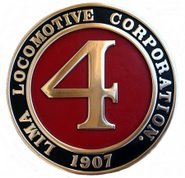Volunteers are a very special type of individual, and are fast becoming a rare resource in our "me first--it’s all about me" society. Discovering--and then nourishing such an individual, who gives of their time, talent and resources--is the challenge of any volunteer driven project.
Our Diamond and Caldor No. 4 restoration project enters its 14th year! That is a lifetime in terms of volunteerism. Some volunteers work awhile and then move on. Others stay longer, committed to the end, determined to overcome the challenges, just to reach the point of saying, "We did it!"
However, the longer the project, the chances increase that some members of the team experience life and family changes that take them out of the local community, even though they remain committed to the endeavor. That’s when Restoration by Remote Control becomes a viable alternative for these individuals to remain connected to the project.
Within our project, several team members support the local team in very special ways.
Richard Wright, who lives in Louisville, Kentucky, has been on the team for years. Richard grew up in Placerville, has family here and played on the No. 4 as a child when it sat at the fairgrounds.
Richard excels at pattern making, casting coordination and technical consultation. Richard has re-created patterns for locomotive number plates, builder’s plates, axle bearings and now is working on brake system patterns. We look forward to Richard’s future return to the local area, so he can enjoy seeing the No. 4 return to operation.
Doug Youngberg recently relocated to Oregon, so he can enjoy being covered over in blowing rain and snow. Also a long standing team member, Doug is instrumental in all phases of the restoration, and is our boiler project leader.
Doug refers to his new shop as the El Dorado Western Oregon Division. His new shop will serve to restore locomotive components and special one of a kind projects such as the Michigan California Lumber "Bobbie Car" reconstruction. Doug falsely thinks he is going to rest in retirement.
Ken and Scott Romine, father and son team from Manteca, continue to serve long distance, executing mechanical work and providing heavy-haul trucking resources for movements of track. Movement of special narrow gauge size equipment calls for special people like the Romine family.
The eventual success of our volunteer driven projects is through overcoming the logistical changes in our members lives. Given electronic communication, projects can be pursued from de-centralized locations, engineering drawing copied and transmitted and visual relationship maintained through website, blog site and cell phone photography.
We maximize our project success through the following:
- Matching the skills of the remote volunteer to projects that don’t require their presence in Placerville.
- Provide resources, like drawings, parts, pictures, and funds to complete the project.
- Stay in touch with the understanding that the remote volunteer does have a life elsewhere; let time be a flexible resource rather than a constraint.
- Acknowledge each contribution with sincere thanks and appreciation.
- Enjoy the ride! Every part counts and every completed project is a step toward the overall accomplishment. All projects have contributing value, and share equally toward completion.
- Upon completion of one remote project, find new projects that may interest the remote volunteer. Projects should be fun!
Thanks to all of our remote volunteers. Your efforts are most appreciated.






